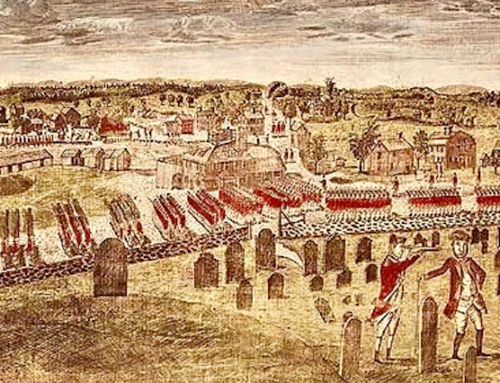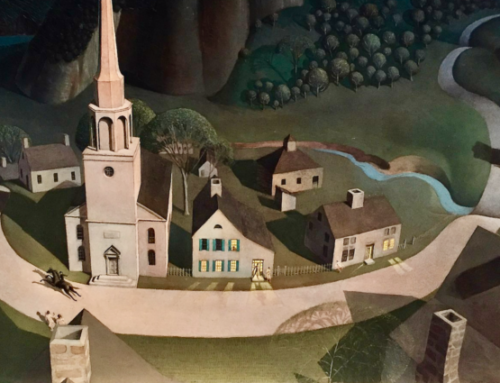For me, the Teton Range of the American West will always be the best America has to offer: huge spaces, demanding spires, and painful beauty.
 This past summer, I had the high privilege of traveling into the great American West several times. Nebraska, Kansas, Colorado, Wyoming, and Montana. Frankly, there’s nothing quite like massive, wide-open skies, seemingly endless seas of grass, groves of aspens and firs, and the snow-capped Rocky Mountains to make my soul sing. Since earliest childhood, I’ve traveled West. I never miss a chance to do so even now.
This past summer, I had the high privilege of traveling into the great American West several times. Nebraska, Kansas, Colorado, Wyoming, and Montana. Frankly, there’s nothing quite like massive, wide-open skies, seemingly endless seas of grass, groves of aspens and firs, and the snow-capped Rocky Mountains to make my soul sing. Since earliest childhood, I’ve traveled West. I never miss a chance to do so even now.
In August, my wife, kids, and I piled into our Honda Odyssey (named Aeneas, just to spite the Greeks) and drove West from Michigan. On our journey, we stopped at four very different places: Willa Cather’s famous Nebraska town, Red Cloud; the geographical center of the United States; Sand Creek, the site of the infamous 1864 massacre; and Bent’s Fort, a private trading post that served as a cosmopolitan meeting place of thousands of peoples on the Arkansas River. Later that same month, traveling for Hillsdale College, I visited Bozeman, Montana, and Jackson Hole, Wyoming, driving from one to the other through Yellowstone and the Tetons.
Each of these places evokes a certain emotion and, in attempting to capture the memory and essence of each, invokes nothing less than a state of being.
***
Red Cloud, Nebraska. Cather described the struggles of the town in its infancy as well as the beauty of human struggle.
But the great fact was the land itself, which seemed to overwhelm the little beginnings of human society that struggled in its sombre wastes. It was from facing this vast hardness that the boy’s mouth had become so bitter; because he felt that men were too weak to make any mark here, that the land wanted to be let alone, to preserve its own fierce strength, its peculiar, savage kind of beauty, its uninterrupted mournfulness.
Clearly, the town made it. Indeed, in large part due to Cather, it prospers. Regardless, we should consider the spot sacred, especially as Imaginative Conservatives, as it’s where Cather’s imagination blossomed.
When the road began to climb the first long swells of the Divide, Alexandra hummed an old Swedish hymn, and Emil wondered why his sister looked so happy. Her face was so radiant that he felt shy about asking her. For the first time, perhaps, since that land emerged from the waters of geologic ages, a human face was set toward it with love and yearning. It seemed beautiful to her, rich and strong and glorious. Her eyes drank in the breadth of it, until her tears blinded her. Then the Genius of the Divide, the great, free spirit which breathes across it, must have bent lower than it ever bent to a human will before. The history of every country begins in the heart of a man or a woman.
***
Just south of Willa Cather’s Red Cloud is Lebanon, Kansas, the geographical center of the 48 states. I’ve already spent considerable time lamenting the desecration of this place in ways that Eric Voegelin predicted and Richard Gamble has explained so well.
And, here’s the abomination, the mixing of Christian and nationalist symbols.
***
Several days after the shock we experienced at Lebanon, Kansas, we drove to an even more depressing spot, a place that exemplifies the absolute worst tendencies of American nationalism, imperialism, and expansionism. Indeed, it might be harder to find a more unholy place in all of American than this, the site of the November, 1864, massacre of Northern Cheyenne Indians. Sand Creek, Colorado.
One of the heroes of the 1862 Civil War battle of Glorietta Pass, Colonel John M. Chivington considered himself maligned as the local Denver press labeled him “Bloodless Chivington,” a reference to his inactivity since the famous New Mexican battle. Only increasing tensions in Colorado, Indians had raided numerous settlements throughout the summer of 1864. Humiliated by the press, Chivington led a small but well-armed and determined force into eastern Colorado searching for Indian encampments. In extreme eastern Colorado, along the Sand Creek, Chivington and his men ran across Black Kettle’s village of nearly five hundred Northern Cheyenne Indians in late November 1864. Though the village flew an American and a white surrender flag, Chivington and his forces struck at dawn on November 29, 1864. Within a few hours, the Colorado forces had killed and mutilated nearly 200 of the formerly 500 member tribe. Most of those killed and cut apart were women and children. Taking scalps from women (from the lower half of the body) and children, Chivington and his men returned to Denver and proudly displayed their “trophies” to great applause of the Denver citizenry and the local press. The massacre polarized the Indians on the Great Plains. It became apparent to them that they might become the next victims of unrestrained brutality. Their distrust of Americans increased significantly and they retaliated across the Plains. Most eastern Americans were horrified by the events in eastern Colorado, and Congress held several hearings investigating Chivington and the massacre. None found him guilty.
As the Birzer family arrived at the spot this past August, a huge gust of wind hit just as I stepped out of the van, knocking me to the ground. The moment fit the soberness of the site.
***
To the west and a bit to the south, we also visited Bent’s Fort, a private free-trade zone that welcomed all persons of good will from 1833 to 1846. What a contrast to the bizarre and unsettling nationalism of Lebanon and the sheer horror and brutality of Sand Creek.
At a tiny spot on the Arkansas River, any person (American, Mexican, Indian, etc.), regardless of the accidents of birth, could trade and find sanctuary at this cosmopolitan spot. Even to this day, the place calms and soothes.
***
As mentioned above, I drove through Yellowstone and next to the Tetons during the last week of August. Alone, I found the scapes particularly breathtaking. As I approached Jackson Hole, a storm came across the front range of the Tetons. I pulled over and watched. What I saw took my breath away, and I’m still astounded, even two months later, that Grace allowed me to witness such a thing.
For me, the Tetons will always be the best America has to offer. Huge spaces, demanding spires, and painful beauty.
This essay was first published here in October 2013.
The Imaginative Conservative applies the principle of appreciation to the discussion of culture and politics—we approach dialogue with magnanimity rather than with mere civility. Will you help us remain a refreshing oasis in the increasingly contentious arena of modern discourse? Please consider donating now.
The featured image is courtesy of Pixabay.







Spectacular country. Maybe the real America exists wherever you were born and raised. For me, that’s southeastern Connecticut. You should see Long Island Sound on a summer afternoon with a fresh southwesterly teasing the waves, or the century-old cider mill in mid-October where the smell of apples makes you cry for beauty. And here’s a salute to the silent majesty of a submarine gliding down the Thames River toward a six-month deployment….I wish I could post pictures.
As a descendant of people from England, Scotland, Ireland, Germany, and American Native (Heinz 57 varieties), the route of America runs down hill from the Eastern coast, sites of the first colonies Pilgrims, Rhode Island, Pennsylvania, North Carolina (naming those most noted for beginning with religious liberty and/or more political liberty), the Great Awakenings, the founding of the freest nation on Earth (even with its great evil of slavery), and the launching of the Great Century of Missions, it seems consonant to recognize that the moral mountains diminish as one moves West, while the geographical Mountains mount in size and height. Having relatives spread across a number of the colonies and a great deal of the West leaves one with poignant perspectives.
A recommendation for further reading: “The Solace of Fierce Landscapes: Exploring Desert and Mountain Spirituality” by Belden C. Lane.